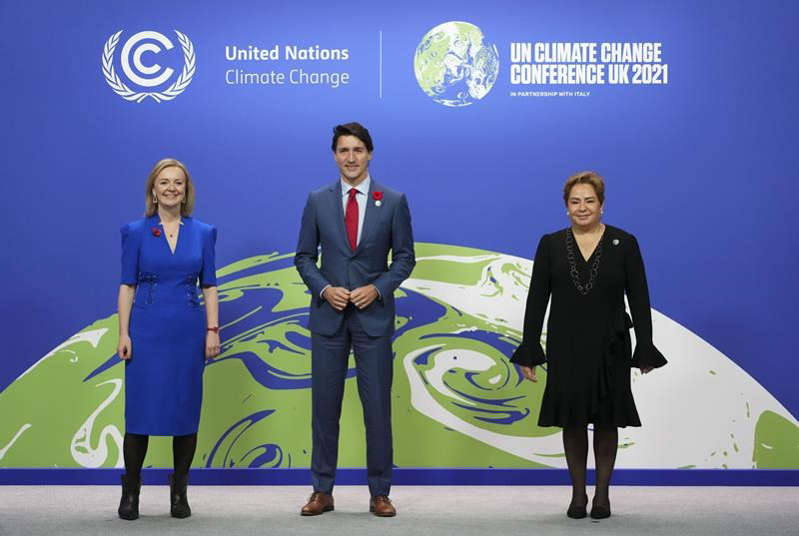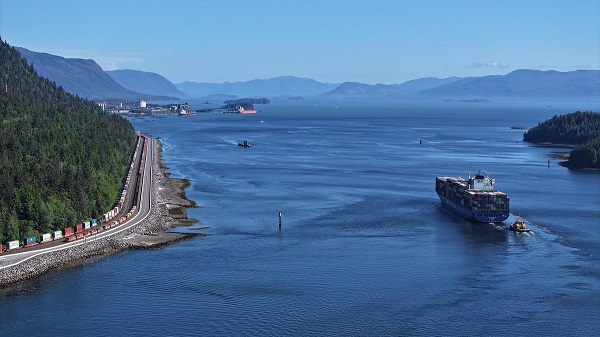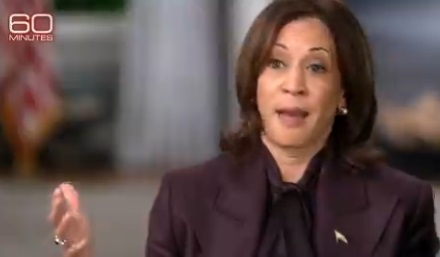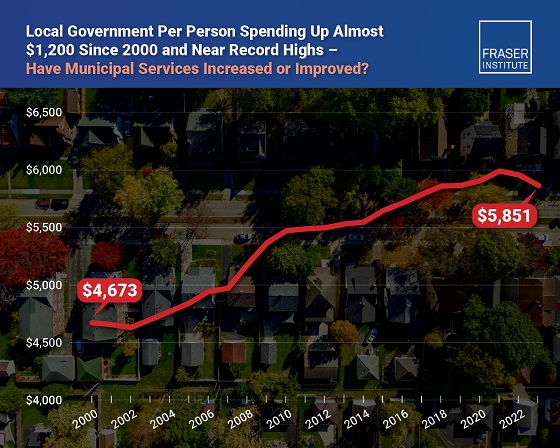Alberta
Ottawa’s emissions policies will impose huge costs on Albertans

From the Fraser Institute
By Tegan Hill and Elmira Aliakbari
The path Trudeau is forcing us down leads to a much poorer economy (completely cratering Canada’s energy industry while making everything more expensive) and negative environmental benefit (that’s right, it’s worse as developing nations use the energy that’s cheapest). So maybe it’s time to scrap the tax.
The federal NDP recently ended its support for the consumer carbon tax citing its significant cost to everyday Canadians. But Canada’s costly climate change policies extend beyond the carbon tax. Indeed, the Trudeau government has introduced numerous policies in an attempt to reduce greenhouse gas (GHG) emissions, which impose major costs on Albertans.
The consumer carbon tax is perhaps the most widely known GHG reduction policy, which places a price on carbon (currently at $80 per tonne) and is set to rise to $170 per tonne by 2030. However, the Trudeau government has also imposed other regulations and mandates, including clean fuel regulations, electric vehicle mandates, the phase-out of coal-based electrical generation and building efficiency mandates.
The costs? According to a recent study, these GHG policies will shrink the Alberta economy (as measured by GDP) by an estimated 6.0 per cent by 2030. And employment in the province is expected to decline by 0.9 per cent. To put these figures into perspective, a 6.0 per cent contraction in 2024 would have shrunk the provincial economy by $27.7 billion, while a 0.9 per cent decrease in employment would have meant a loss of approximately 22,837 jobs (based on data for August 2024).
While these policies are expected to reduce GHG emissions, they fall short of meeting the government’s national GHG reduction targets. As a result, further economic pain will be required if the federal government implements additional measures to further reduce GHGs emissions.
These findings echo other studies that measure the effects of various climate change policies. According to a report by Deloitte, for instance, Trudeau’s policy to cap GHG emissions in the oil and gas sector (to 35 to 38 per cent below 2019 levels by 2030) will lead to less investment, nearly 70,000 fewer jobs, and a 4.5 per cent decrease in economic output (i.e. GDP) among the provinces by 2040. Unsurprisingly, Alberta is projected to be the hardest hit province.
And here’s the kicker—these huge economic costs come with little to no actual environmental benefit. Even if Canada shut down its entire oil and gas sector by 2030, thus eliminating all GHG emissions from the sector, the resulting reduction would equal four-tenths of 1 per cent of global emissions, which would have an undetectable impact on the climate. Meanwhile, as demand for fossil fuels continues to increase, constraining oil and gas production and exports in Canada merely shifts production to other countries, which have lower environmental and human rights standards such as Iran, Russia and Venezuela.
The Trudeau government’s climate change regulations are imposing huge costs on Albertans with little to no actual environmental benefit. While support for some of these policies—particularly the consumer carbon tax—is waning, federal policymakers should seriously rethink numerous other regulations.
Authors:
Alberta
Alberta Provincial Police – New chief of Independent Agency Police Service

Sat Parhar has been appointed as the first chief of the Independent Agency Police Service, marking the next step toward a new municipal policing option.
The appointment of a new chief for the Independent Agency Police Service (IAPS) marks the next step in giving municipalities a new option for local policing and builds on the work already underway for the agency to assume the police-like duties currently carried out by the Alberta Sheriffs. The IAPS will empower municipalities to adopt strategies that effectively respond to their specific safety concerns, enhancing public safety across the province.
Chief Parhar brings more than 25 years of policing experience, including senior roles with the Calgary Police Service, most recently as deputy chief. His frontline policing experience and deep understanding of Alberta’s complex and diverse public safety landscape positions him to lead the agency as it takes shape and begins its work as a new municipal policing option, keeping communities safe.
Once operational, the agency will strengthen Alberta’s existing policing model and complement the province’s current police services, which includes the RCMP, Indigenous policing services and municipal police. It will help fill gaps and ensure law enforcement resources are deployed efficiently to meet Alberta’s evolving public safety needs and improve law enforcement response times, particularly in rural communities.
“Appointing Chief Sat Parhar is a key milestone in Alberta’s plan to give municipalities a real choice in how their communities are kept safe. This is about building a modern police service that reflects the priorities of Albertans, strengthens local decision-making, and ensures every corner of our province, especially rural areas, can count on responsive, effective law enforcement. With his decades of experience and deep understanding of Alberta’s policing landscape, he is the right leader to bring this vision to life.”
“This appointment signifies a significant step forward in our efforts to establish a more robust, community-focused policing model that is better equipped to meet the unique needs of our local residents. Under Chief Parhar’s visionary leadership, we are confident that we will develop a modern, efficient police service that not only enhances public safety but also aligns closely with the priorities and values of Albertans. His experience and commitment are vital in shaping an IAPS that is responsive, transparent, and dedicated to fostering trust and collaboration within the community, ultimately ensuring a safer and more connected society for all.”
Chief Parhar’s immediate priorities will be to hire an executive team and commence organizational planning such as developing key recruitment, training and other operational policies. Chief Parhar’s appointment is the first step of many to establishing the IAPS.
“It’s an honour to take on this role and help shape a modern police service built for Alberta. My focus from day one will be on setting high standards for professionalism, building strong relationships with our partners and ensuring this service reflects the needs and priorities of the communities we serve.”
The Independent Agency Police Service was formally created through regulation following the passing of Public Safety Statutes Amendment Act, 2024. The agency will operate as an independent Crown corporation, and will be renamed the Alberta Sheriffs Police Service, with its head office located in Calgary. The IAPS will be operationally independent from the provincial government with civilian oversight, consistent with all police services in Alberta.
“When it comes to policing, municipalities like ours deserve a choice – especially when the current system leaves us disadvantaged simply because of our size. We look forward to learning more about what that alternative will look like once an Alberta police agency is fully established and the options are clear. For us, this is about fairness, sustainability, and ensuring municipalities have access to policing solutions that reflect both their needs and their realities.”
Quick facts
- The regulation establishes the IAPS Provincial Corporation and its governance structure including board of directors, board of director powers, financial responsibilities and accountabilities.
Related news
- Expanding municipal police service options (April 7, 2024)
Alberta
Pierre Poilievre – Per Capita, Hardisty, Alberta Is the Most Important Little Town In Canada

From Pierre Poilievre
-

 Crime2 days ago
Crime2 days agoNational Health Care Fraud Takedown Results in 324 Defendants Charged in Connection with Over $14.6 Billion in Alleged Fraud
-

 Health2 days ago
Health2 days agoRFK Jr. Unloads Disturbing Vaccine Secrets on Tucker—And Surprises Everyone on Trump
-

 Business1 day ago
Business1 day agoElon Musk slams Trump’s ‘Big Beautiful Bill,’ calls for new political party
-

 Business14 hours ago
Business14 hours agoWhy it’s time to repeal the oil tanker ban on B.C.’s north coast
-

 Censorship Industrial Complex1 day ago
Censorship Industrial Complex1 day agoGlobal media alliance colluded with foreign nations to crush free speech in America: House report
-

 International22 hours ago
International22 hours agoCBS settles with Trump over doctored 60 Minutes Harris interview
-

 Business14 hours ago
Business14 hours agoLatest shakedown attempt by Canada Post underscores need for privatization
-

 Energy14 hours ago
Energy14 hours agoIf Canada Wants to be the World’s Energy Partner, We Need to Act Like It








